Hacking Quality Score: How One Advertiser Got A Quality Score Of 8.8/10
In previous articles, I’ve discussed why I believe that Quality Score is so critical to PPC success. To illustrate the point in a more concrete way, I want to present a detailed case study of a WordStream client that is absolutely crushing its AdWords Quality Score. In this case study, I’ll reveal exactly how they did […]
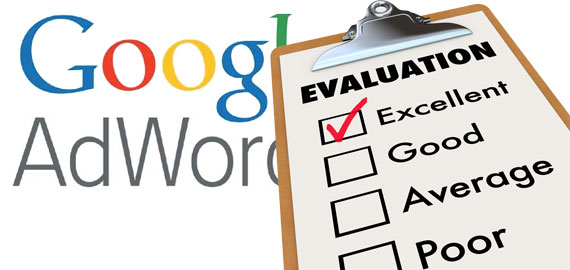 In previous articles, I’ve discussed why I believe that Quality Score is so critical to PPC success. To illustrate the point in a more concrete way, I want to present a detailed case study of a WordStream client that is absolutely crushing its AdWords Quality Score. In this case study, I’ll reveal exactly how they did it, and how much they’ve gained from their efforts.
In previous articles, I’ve discussed why I believe that Quality Score is so critical to PPC success. To illustrate the point in a more concrete way, I want to present a detailed case study of a WordStream client that is absolutely crushing its AdWords Quality Score. In this case study, I’ll reveal exactly how they did it, and how much they’ve gained from their efforts.
Average Quality Score Of 8.8/10? What? How!
The advertiser in this case study is a small business operating in the insurance industry (I’ve anonymized the data to protect client identity), which happens to be one of the most competitive verticals in PPC. A skeptic might suggest that the situation is pretty hopeless, without chance of success.
But the truth is far from it! In fact, this AdWords advertiser is thriving! Take a look here:

Figure A: This advertiser’s Quality Score rocks!
Figure A shows a graph of the advertiser’s Quality Score distribution. The green bars on the graph show that all of the keyword impressions in the advertiser’s account are being accrued to keywords with perfect Quality Scores of 10/10 or 7/10, for an impression-weighted average Quality Score of 8.8/10!
To give you a better sense of just how great this is, the yellow curve on the figure shows the typical Quality Score distribution based on some internal WordStream best practices that we’ve developed. From that, you can see that it’s quite rare to have such high percentages of perfect 10 Quality Score keywords and no low Quality Score keywords in an account.
So how the heck did they do it?
Quality Score Is Just Normalized Click-Through Rate
In a previous article, I showed how having a high click-through rate (CTR) relative to Google’s expected CTR for your ad position is the key for having high Quality Scores. Thus, you’d expect an advertiser with super-high Quality Scores to have decent click-through rates. This is indeed the case, as you can see in Figure B.
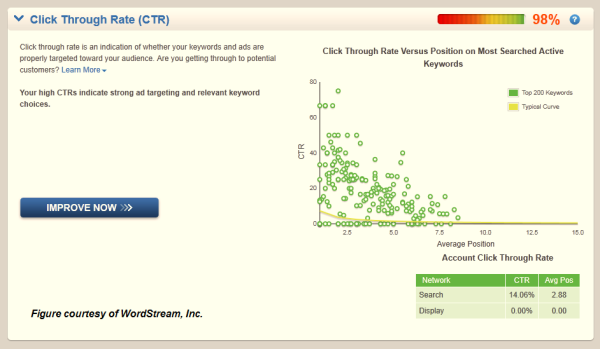
Figure B: High CTR = High Quality Scores
Above, I’ve graphed the CTR versus the average ad position for the advertiser’s top 200 keywords (those with the most impressions). Notice how this advertiser’s click-through rates are off the charts!
To give you a sense of how amazing these click-through rates are, the tiny little yellow curve on the bottom of the chart shows you what a typical CTR would be for a given ad position — again, based on internal best practices developed at WordStream. Also note that the advertiser’s overall average CTR from search is a whopping 14.06%, despite being in a relatively low average position of 2.88.
The reason for the high Quality Scores is straightforward: the advertiser has very high average click-through rates vs. what Google expects to see.
The real question here is: How do you get a 14.06% CTR in an average position of 2.88?
Most of the outlier keywords with CTRs of 30%, 40%, 50% and even 70% are branded keywords, which generally have very high CTRs — but the rest of the keywords aren’t. It’s interesting to note that there are even keywords with 0% CTR which have perfect Quality Scores of 10/10. It’s almost like the high account average CTR is pulling up the Quality Scores for all keywords in the account. I see this in a lot of accounts, and it’s one reason why I always advocate budgeting at least 15% of your PPC budget toward branded keywords.
But, what about all the other keywords with high CTRs? How the heck do they do that? Is there a secret computer glitch in the AdWords system that can be exploited?
This Advertiser Earned His High Quality Scores!
The first thing I notice when looking over this account is that this advertiser is no lazy bum! His amazing Quality Scores weren’t the result of some computer glitch, but rather of diligent, smart PPC optimization work. He’s in his account at least once a week for half an hour or so actually optimizing stuff. Take a look here:
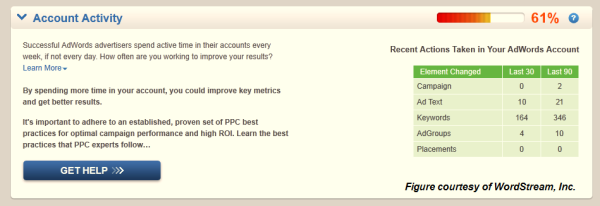
Figure C: Slow and steady wins the race – ongoing PPC optimization is key to success
The figure above was created by looking at the change history logs in AdWords, from which I can ascertain what (if anything) is actually happening in the account. Notice how, in the last month, this small business advertiser has diligently created 10 new ads, tried out 164 new keywords, and added 4 new ad groups. Furthermore, by looking at the 90-day change history numbers, you can see that the advertiser’s optimization activities are consistent over time — definitely a key habit for solving the Quality Score mystery.
It’s also worth noting that even with his amazing Quality Scores of 8.8, he’s not resting on his laurels — he’s still in his account every week, optimizing stuff! This is an attitude that I’ve found to be common among PPC marketers with high Quality Scores.
Okay, so now we know that to get good Quality Scores, you have to do some optimization work. But you’re probably still wondering what exactly the advertiser is optimizing! Let’s first take a look at his keywords.
Focus On Long Tail Keywords
In order to get double digit CTRs, you’ll need to be a little picky in choosing your keywords, especially in a super competitive vertical like insurance. How picky? Take a look here.
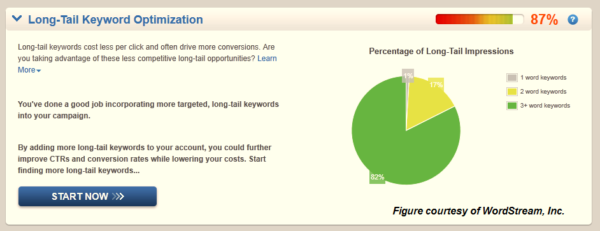
Figure D: To get double digit CTRs, you’ll need to be a little picky in choosing your keywords
In the preceding chart, I analyzed the account’s keywords to see what percentage of impressions are being attributed to keywords with one word (e.g., “insurance,” which is hopelessly broad and unspecific) versus long tail keywords with 3 or more words (e.g., “boston motorcycle insurance,” which is far more relevant and specific). Notice how a whopping 82% of this advertiser’s keyword impressions are being attributed to long tail keywords? This is a key to achieving double digit CTRs.
Being picky is more than just picking specific keywords; you also need to eliminate junk search queries using negative keywords. But, do negative keywords impact Quality Score?
According To Google, Negative Keywords Do Not Impact Quality Score
The official word from Google is that using negative keywords do not impact Quality Score; however, I’m not so sure about that. I can assure you that smart usage of negative keywords will most certainly raise your CTR — and higher CTR almost always leads to higher Quality Score. (It will also improve your ROI!) Let’s take a look at this advertiser’s use of negative keywords:
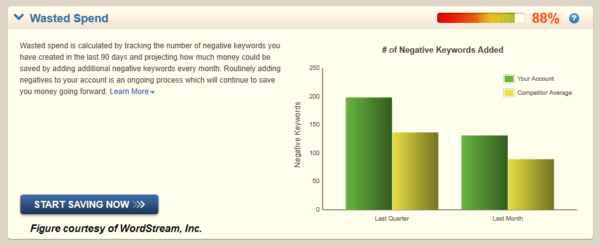
Figure E: Do negative keywords raise Quality Score? The Goog says no, but this advertiser swears by it.
Regardless, it certainly raises CTR and improves ROI.
You can see that negative keyword optimization is probably the advertiser’s most favored PPC optimization method, having added around 100 negative keywords in the last month and around 200 in the last quarter. Like weeding a garden, negative keyword optimization is an important ongoing task!
The combination of targeted keywords and specific negative keywords is a very powerful combination. Notice how, in the following figure, you can see that the advertiser’s average impression share across the entire account (on a budget weighted basis) is 89%!

Figure F: Being picky with keywords means capturing a high impression share of a more narrow portfolio of keywords.
This is pretty much as high an impression share as you’ll ever get, since Google never monetizes 100% of any keyword search. Since there are billions of insurance searches every month, and it would cost too much to buy them all, your keyword targeting strategy should involve being picky and capturing a high impression share of a narrow portfolio of keywords, as opposed to targeting broader keywords and capturing a lower impression share.
Ad Text Optimization
The next step to getting high CTRs is matching those “golden” keywords with killer ads — and to do ad text optimization, as this advertiser has clearly done:
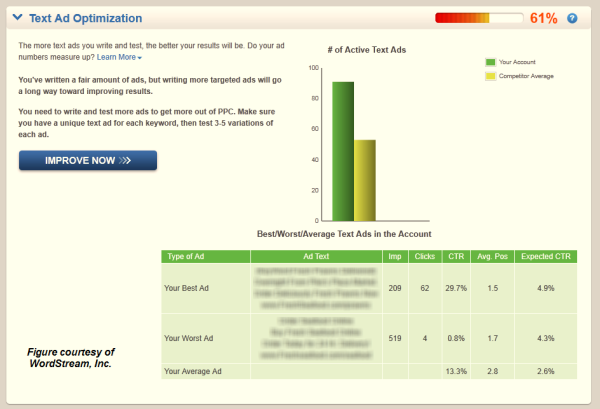
Figure G: This small business advertiser has 100 ads!
Above, you can see that even this small business advertiser has over 100 active ads in his account, which is relatively high for a small account.
Leveraging PPC Best Practices
Finally, a quick scan of the account shows that the advertiser is leveraging all the various AdWords best practices like ad extensions, advanced match types, etc. While this may seem obvious to advanced PPC marketers, adoption of many of these features is quite low — for example, only about half of small businesses have conversion tracking turned on!

Figure H: A quick check of PPC best practices!
The Benefits Of Quality Score
I’ve previously discussed the benefits of having a high Quality Score, but how does the theory align with the reality of this case study?
This particular advertiser was previously spending around $1,000/month on PPC and is now spending about half that much. His CPC is roughly half the industry average. His average CPA is approximately $12. What’s not to love here?
This Could Be Your Quality Score, Too
Hopefully in this article today, I’ve convinced you that “hacking” AdWords Quality Score amounts to doing some smart PPC optimization work, with the proper expectation that it’s going to take some time to figure it out. So, what the heck are you waiting for?
Contributing authors are invited to create content for Search Engine Land and are chosen for their expertise and contribution to the search community. Our contributors work under the oversight of the editorial staff and contributions are checked for quality and relevance to our readers. The opinions they express are their own.
Related stories